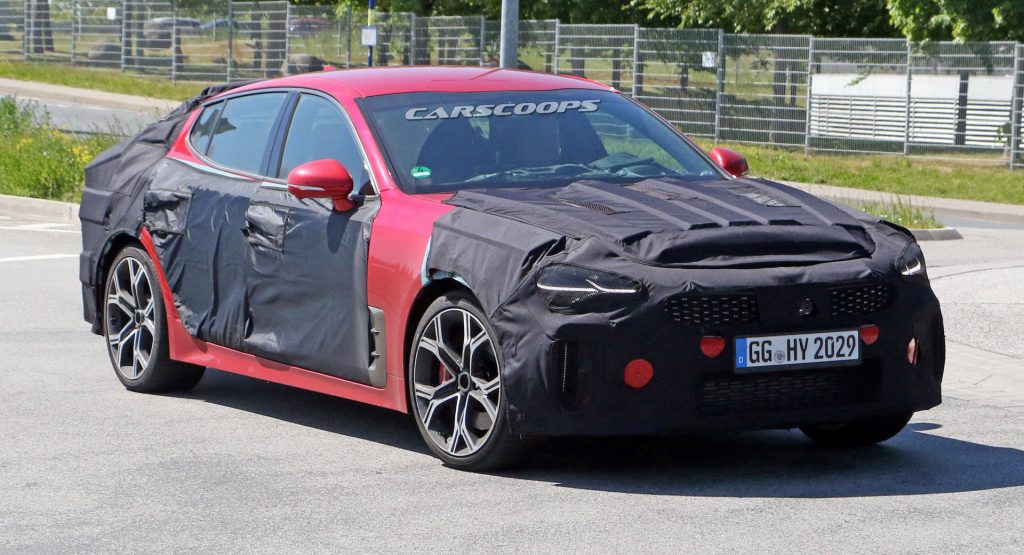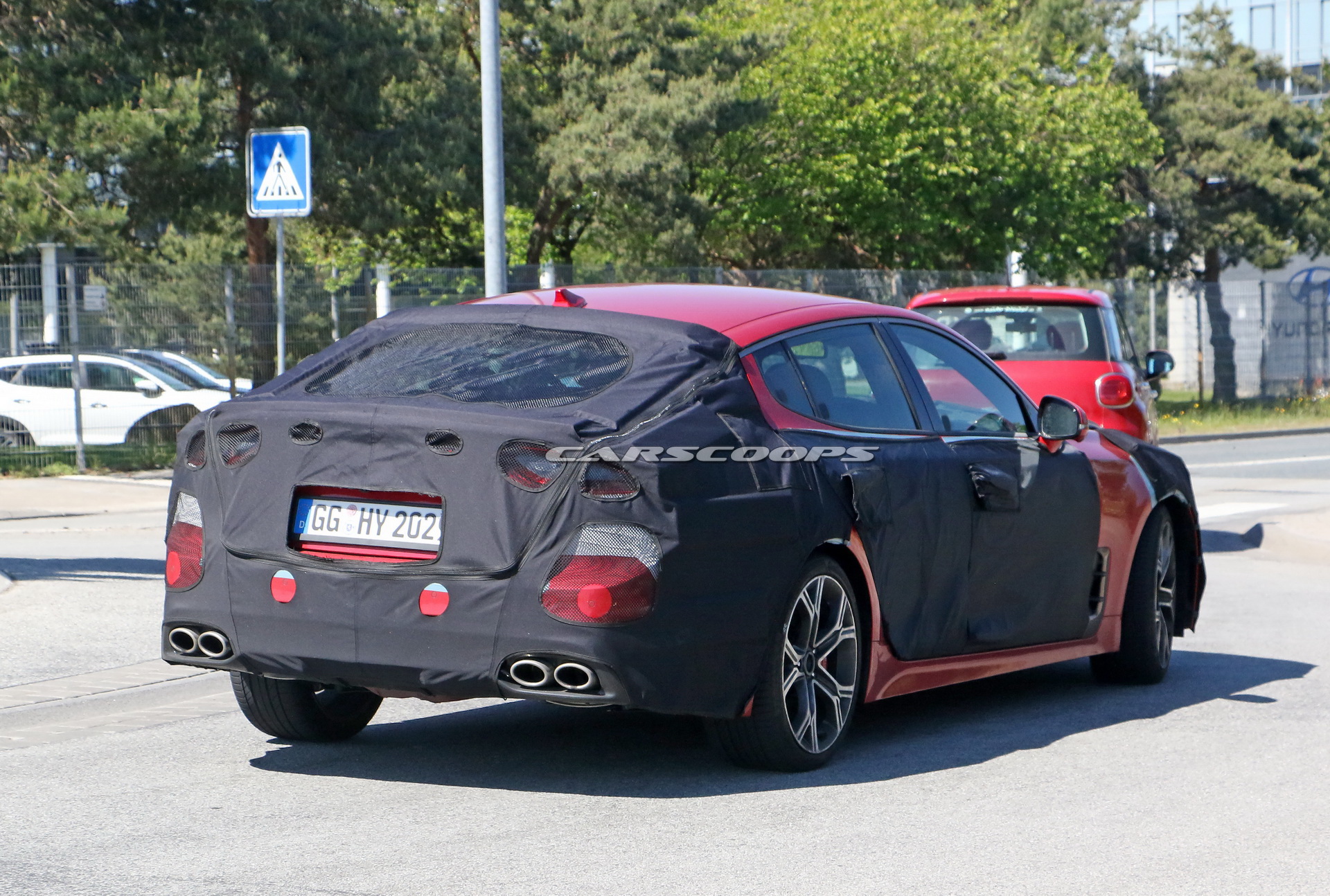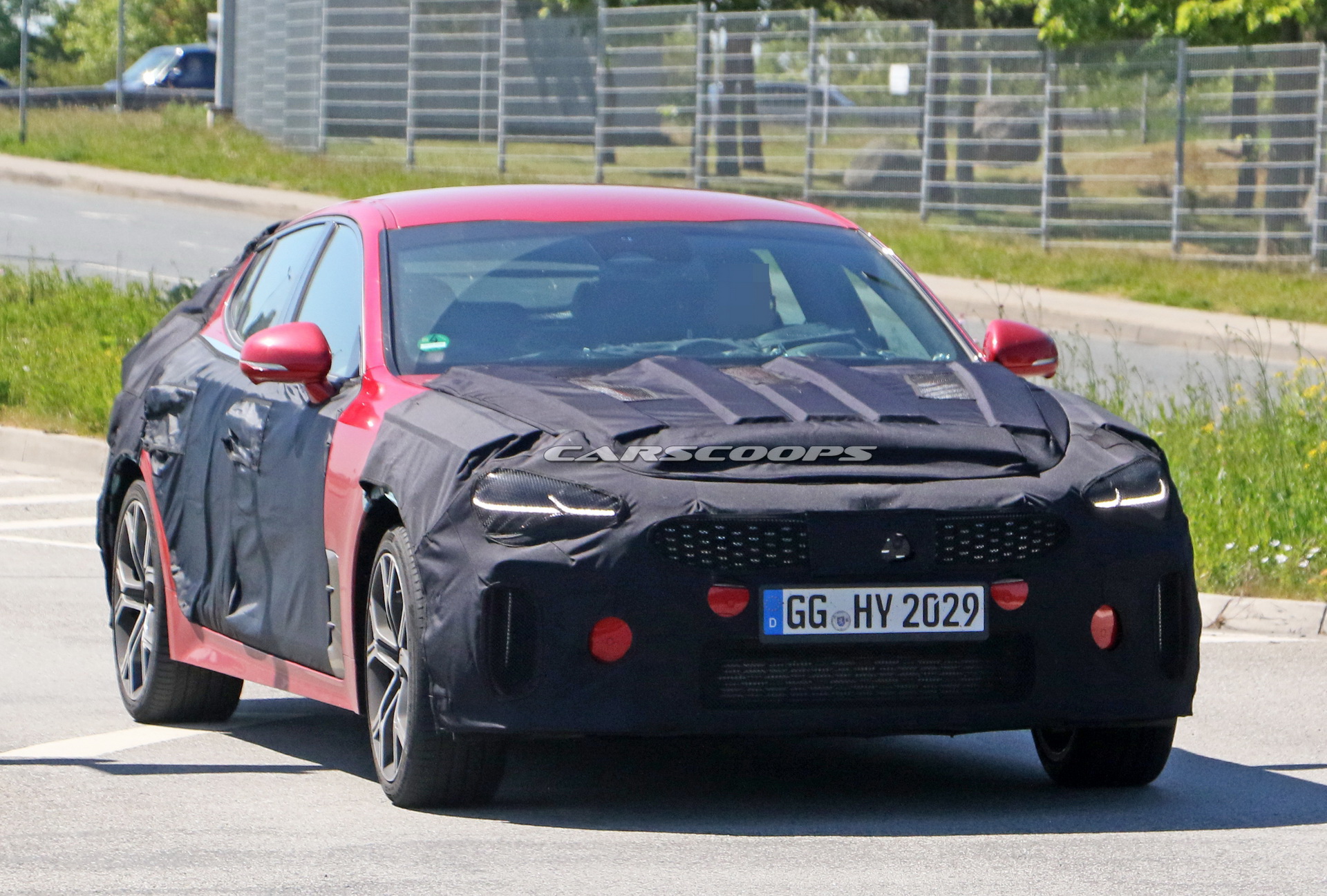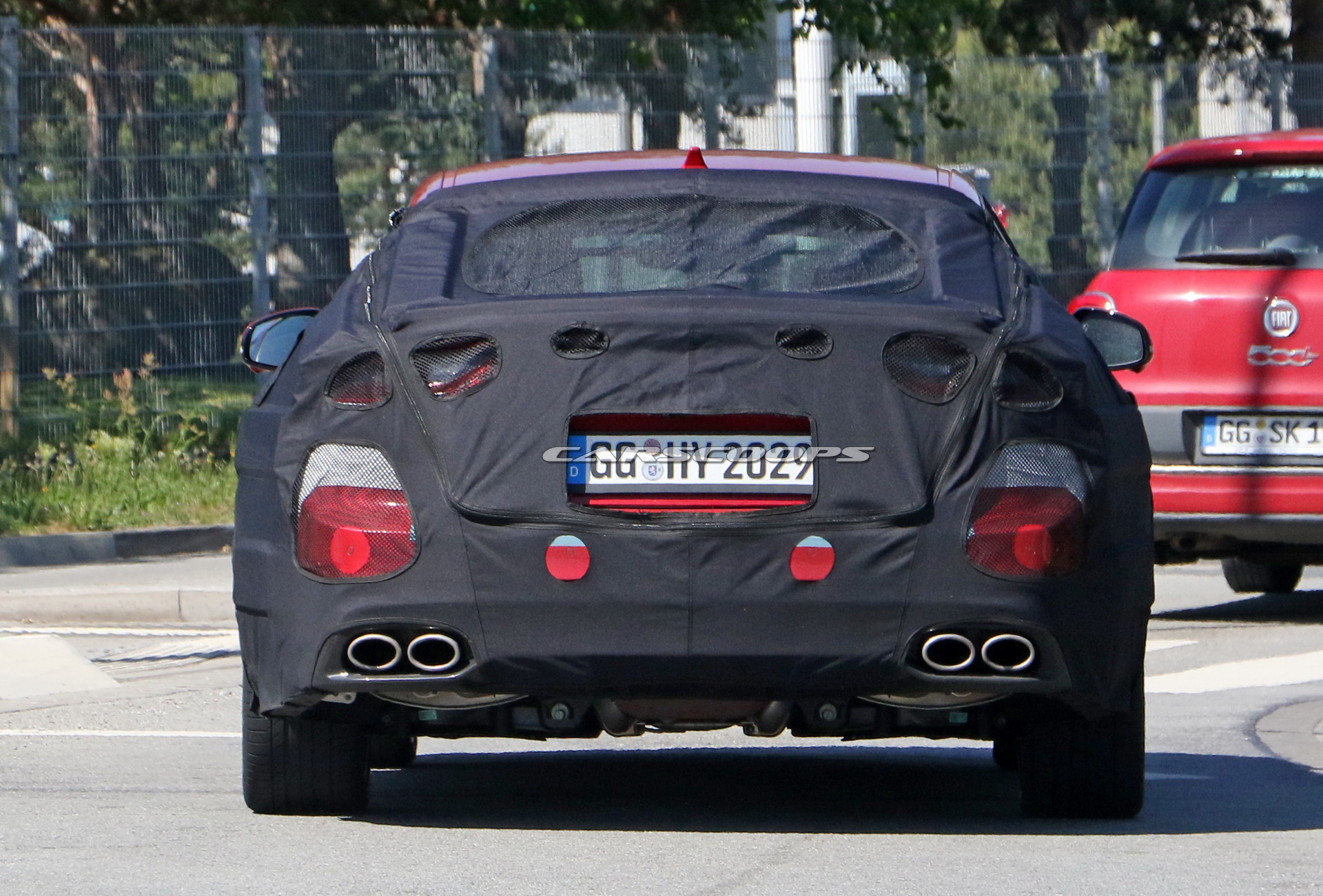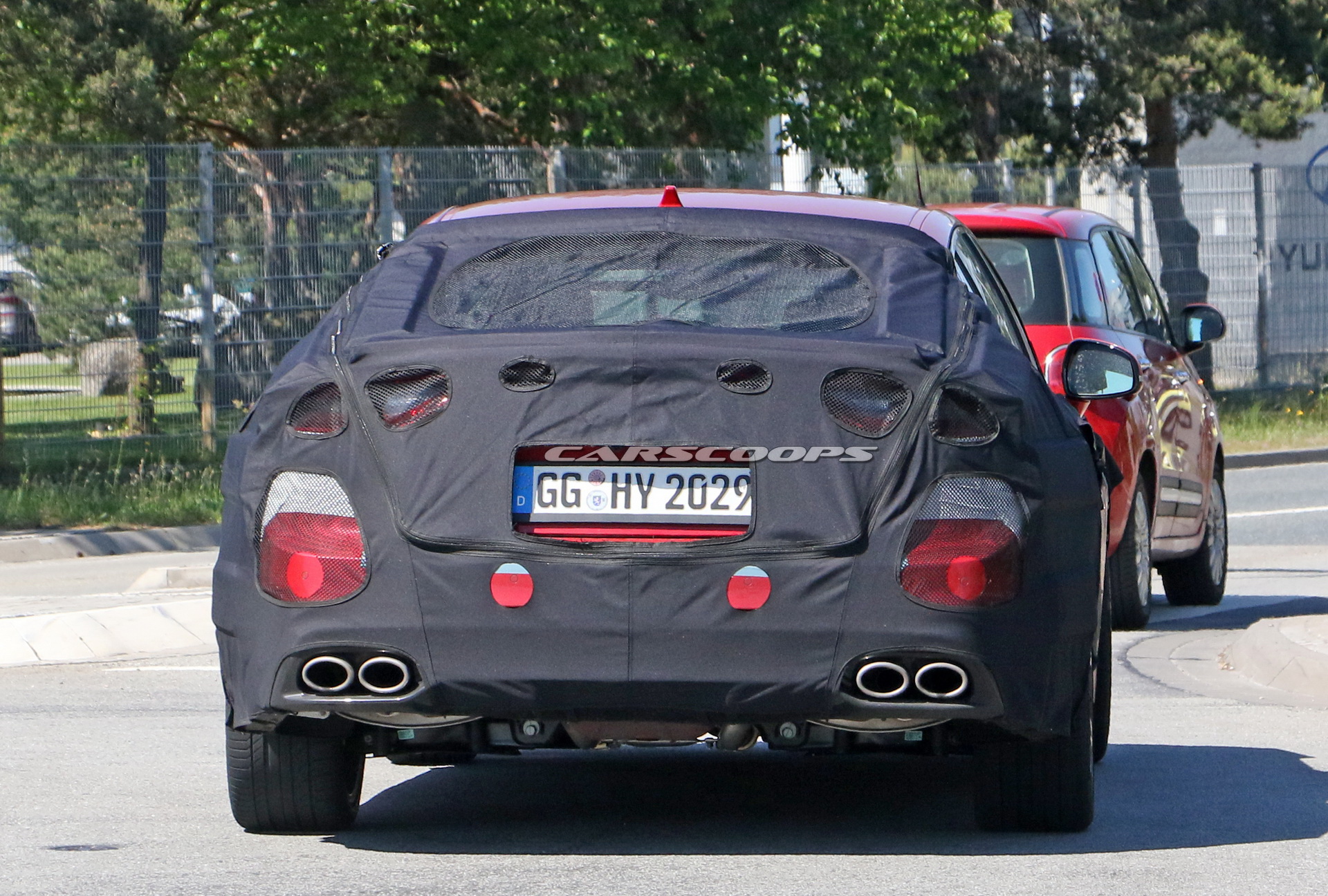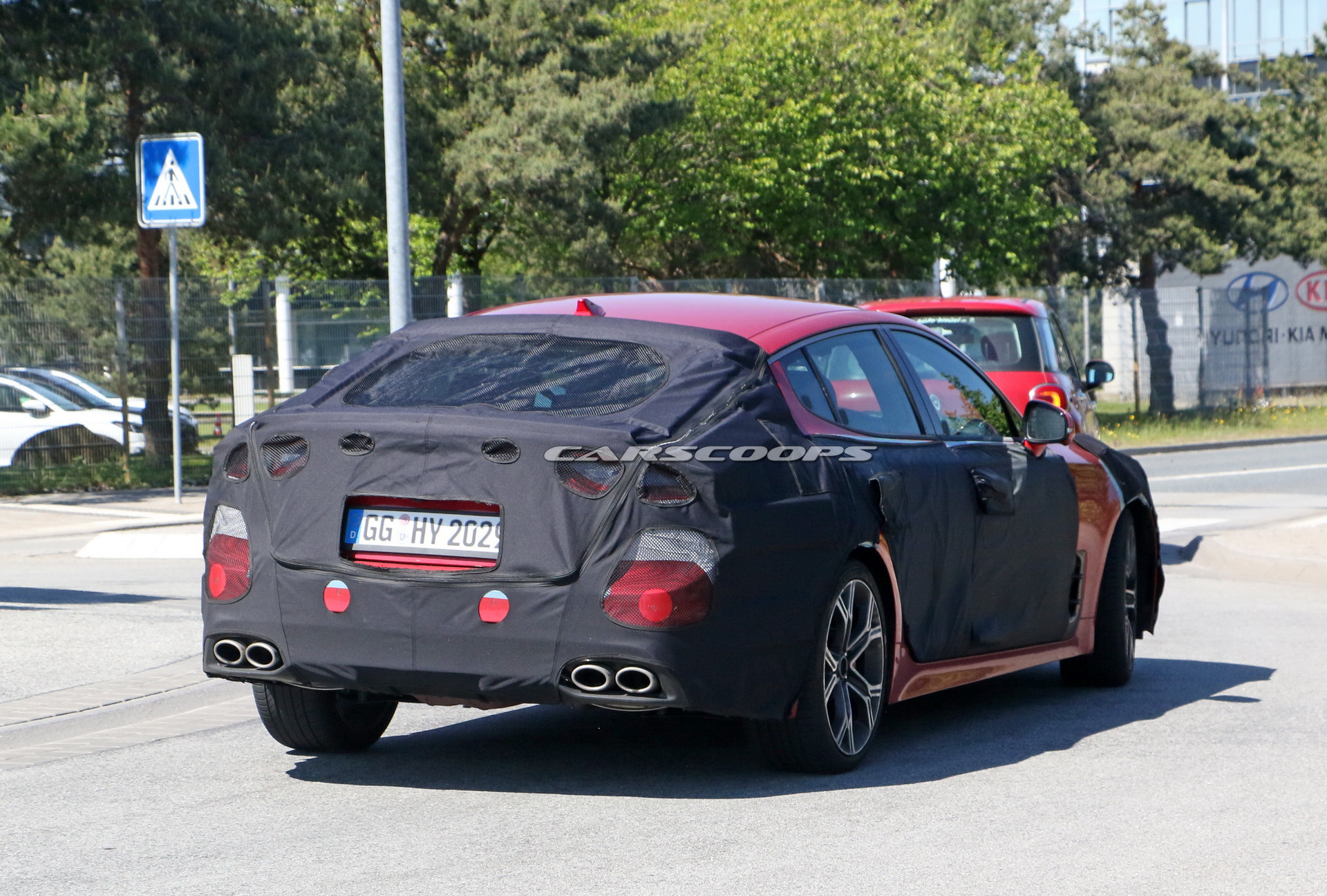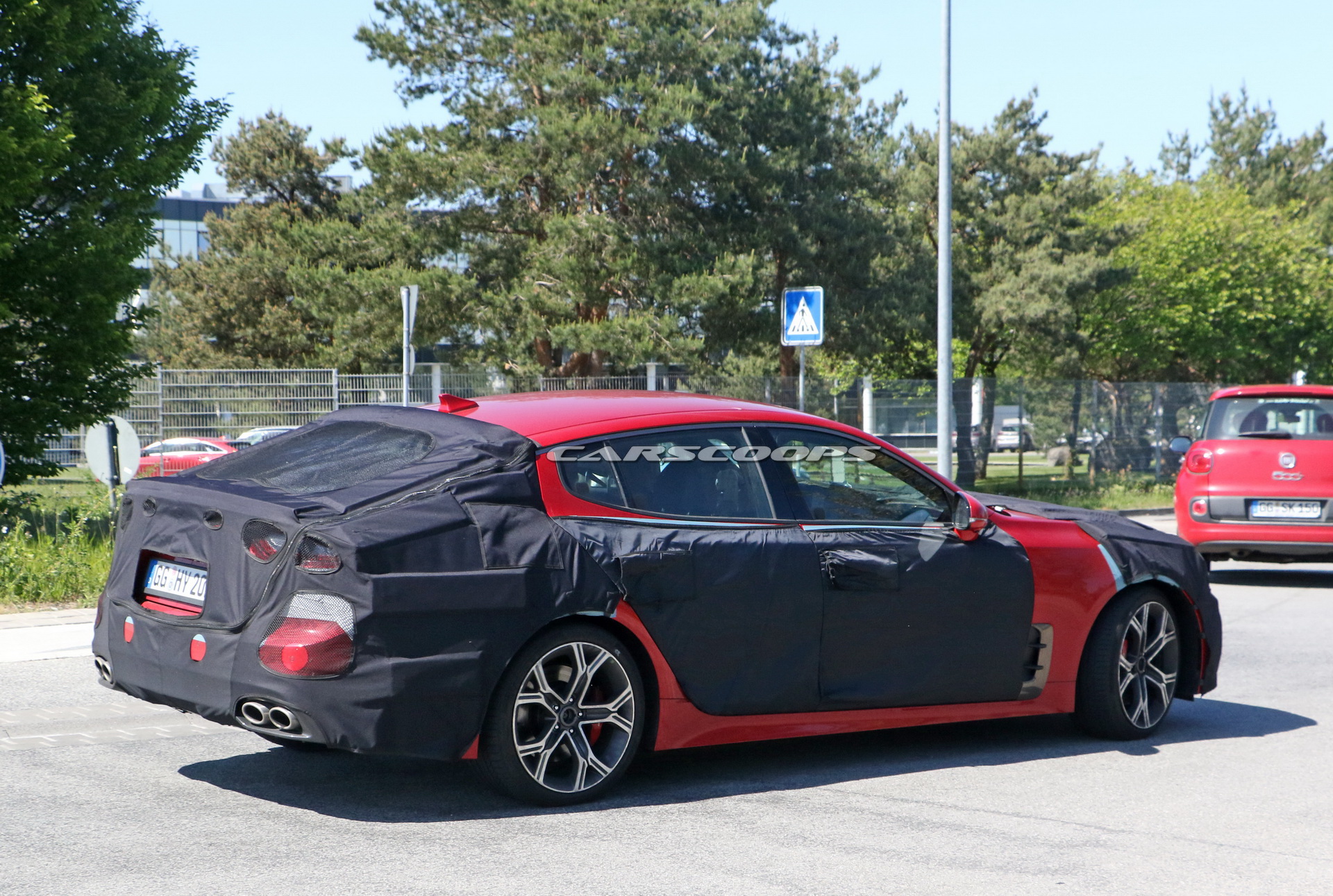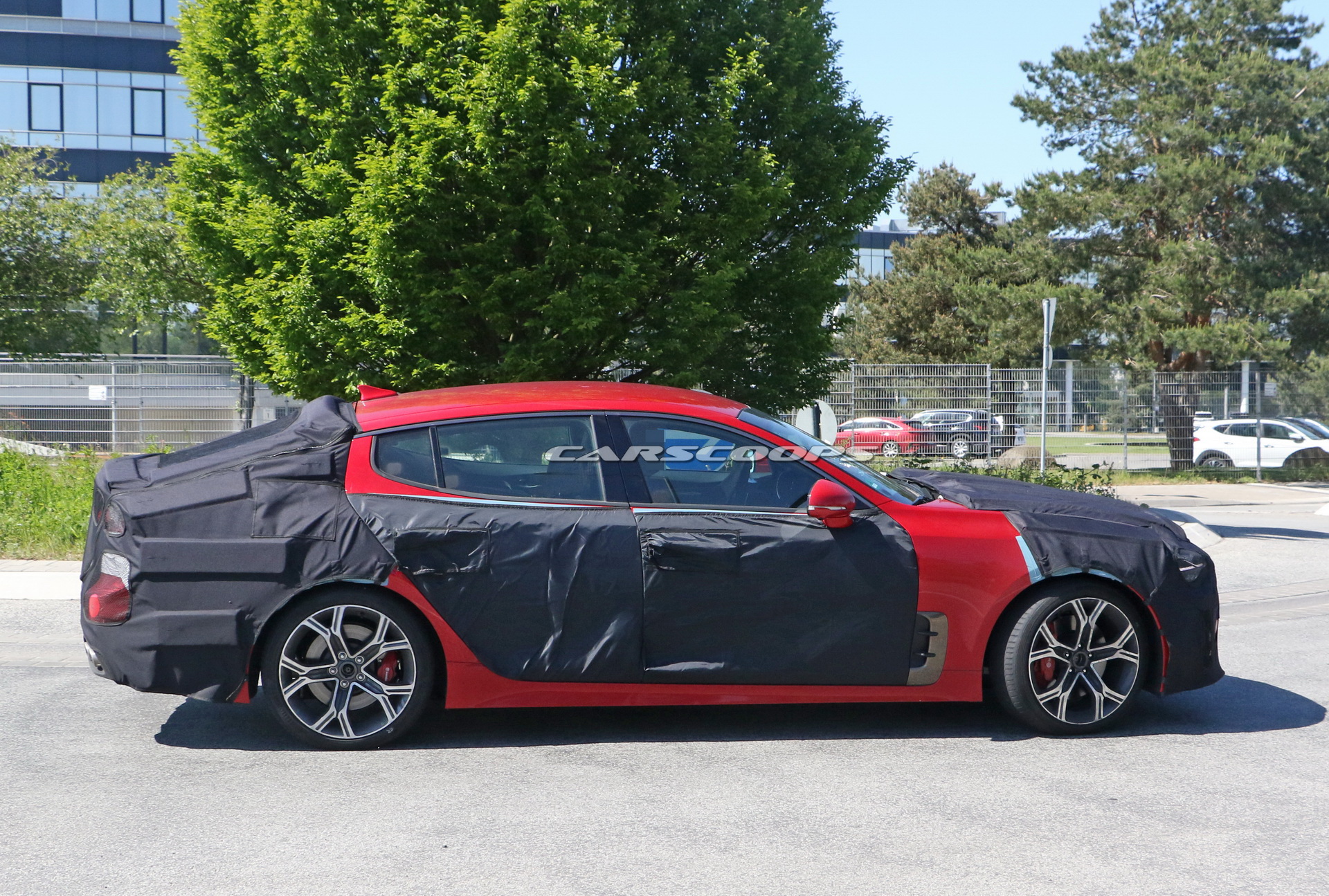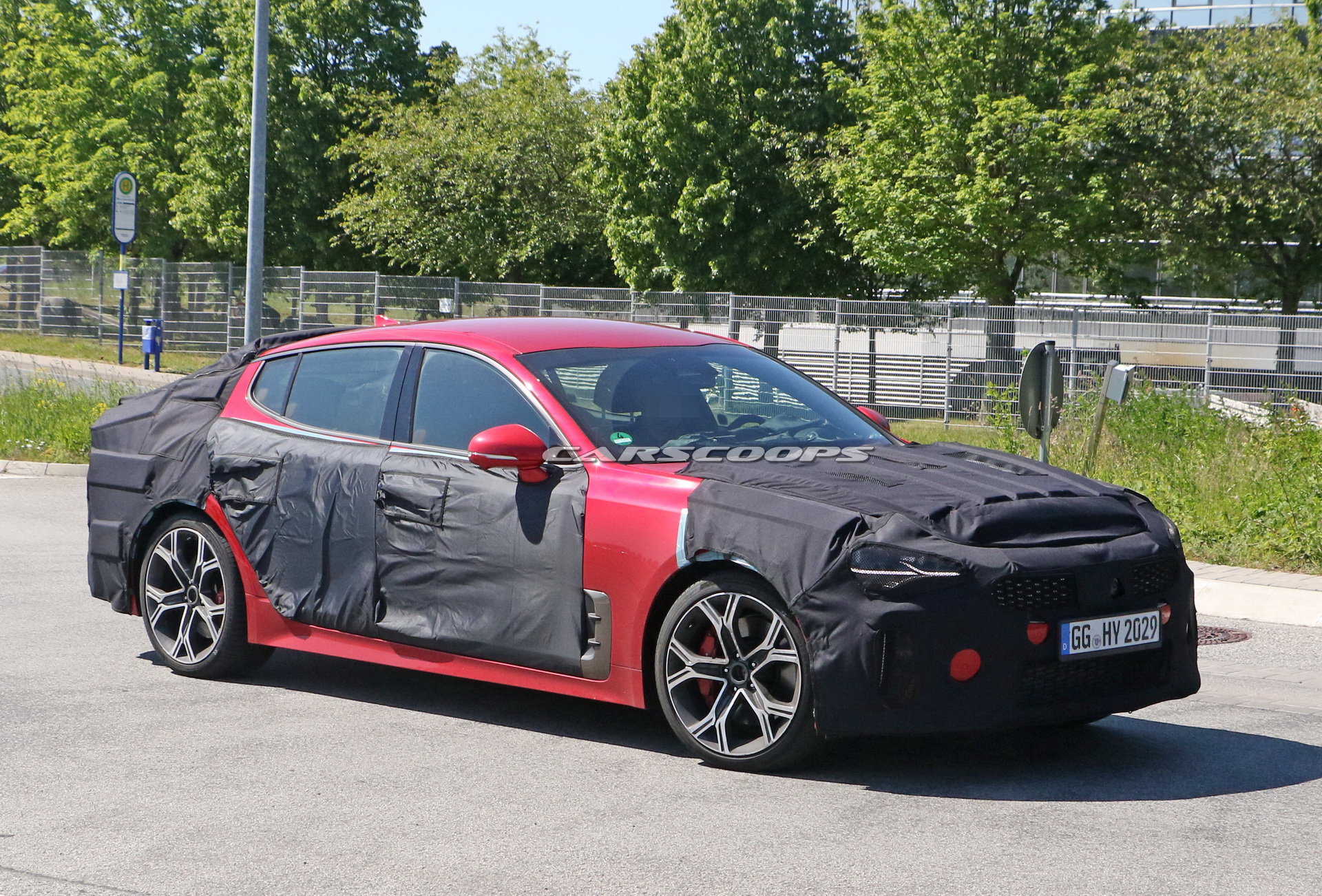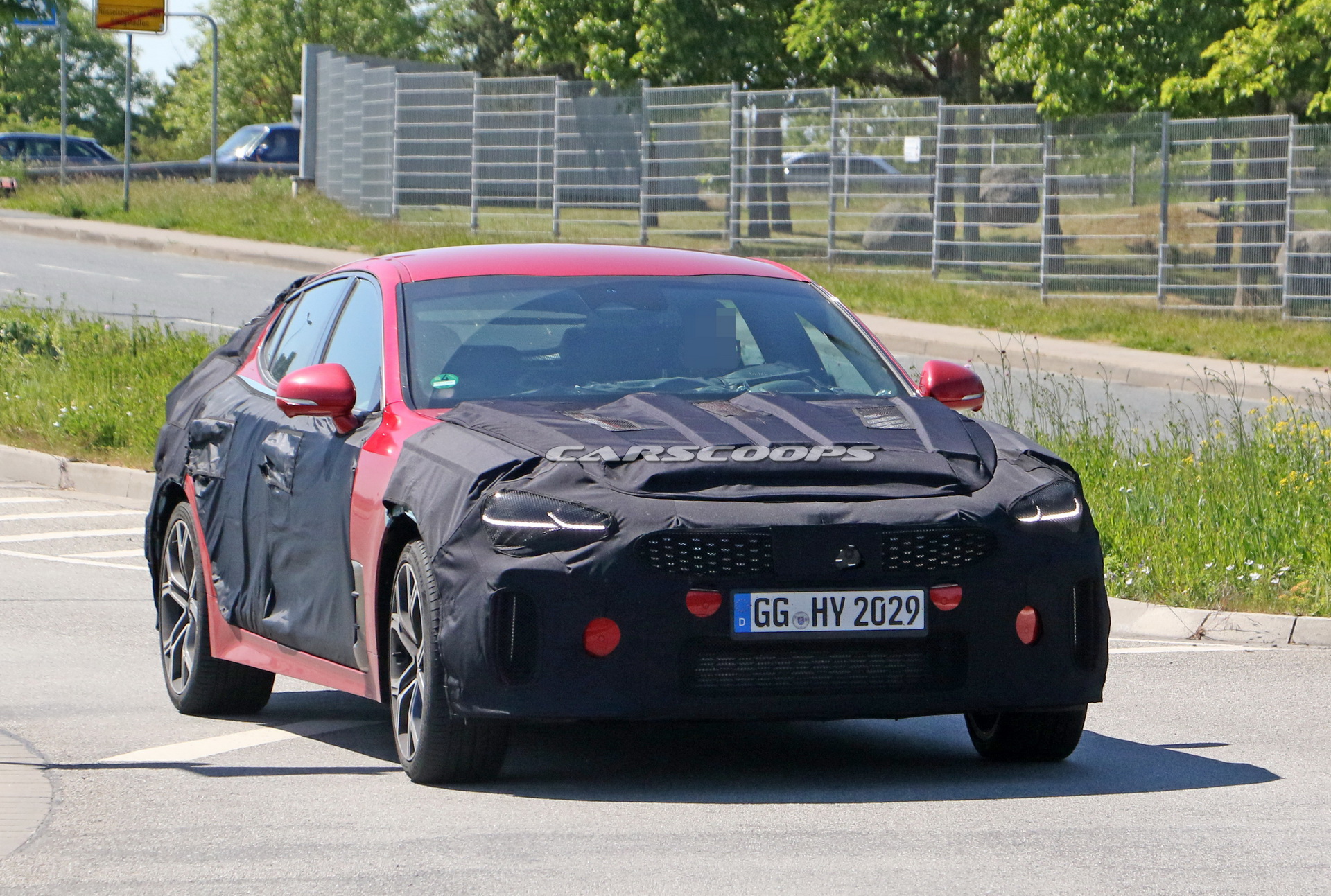Kia was caught testing the facelifted Stinger on European roads for the first time, with the test car covered with heavy camouflage.
Usually this sort of disguise indicates that the carmaker is planning some big styling changes but this isn’t expected with the facelifted Kia Stinger. Instead, the aggressive five-door model is expected to be freshened up in the usual areas, including new light graphics, different bumpers, new wheel designs, and probably a few new color options.
Read More: A Second-Generation Kia Stinger Is Looking Increasingly Unlikely
The biggest update is expected to take place inside the cabin, with the facelifted Kia Stinger to receive a healthy dose of the Hyundai Group’s latest infotainment technologies. Expect a wider and crisper touchscreen display for the new infotainment, as well as a digital instrument cluster option.
Other changes inside the facelifted Kia Stinger will include a redesigned center console and the addition of new trim and upholstery options.
Just like the facelifted Genesis G70, the updated Kia Stinger is expected to replace its existing 2.0-liter turbo four-cylinder unit in the base trim with Hyundai’s new and more powerful 2.5-liter turbo engine. The new 2.5-liter four-cylinder unit can be found in models like the Hyundai Sonata N-Line, producing 290 HP and 310 lb-ft (420 Nm) of torque instead of the 2.0-liter’s 255 HP and 260 lb-ft (353 Nm).
As for the range-topping 3.3-liter twin-turbo V6 engine, the latest reports suggest that it will be slightly updated to offer more performance than the current 365 HP and 376 lb-ft (510 Nm) it makes.
The facelifted Kia Stinger is expected to debut sometime in 2021 and if you choose to believe the rumors, it will be our last chance to get one as the Korean automaker doesn’t plan a successor due to slow sales.




